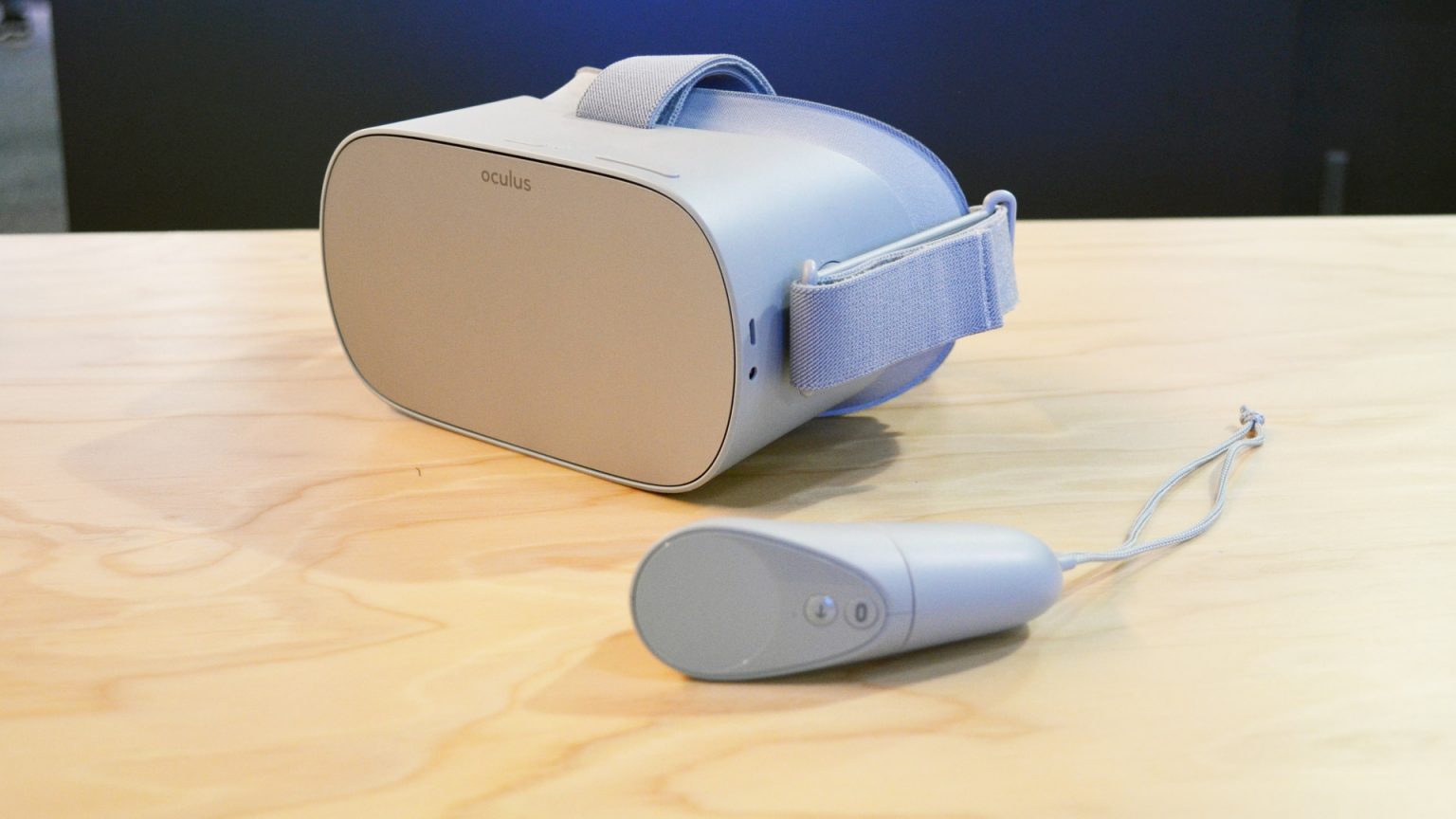The VR renaissance arguably began on Kickstarter back in 2012, and now it’s playing host to another high-powered crowdfunding campaign: Space Odyssey, an educational Virtual Reality game from the mind of Neil deGrasse Tyson which soared past its goal of $314,000. Players will have the chance to “set out on real science-based missions to explore space, colonize planets, create and mod in real time“, which brings with it the question of how can we continue to utilise immersive technologies for educational purposes.
Barriers To Adoption
While immersive technologies are starting to gain traction with consumers, there are still barriers educational institutions need to overcome before adopting the technologies for their students.
While price has been a limiting factor in VR’s adoption into the classroom previously, it may soon become less of an issue with the launch of Oculus Go and Google’s standalone Daydream headset. The Oculus Go, which is launching in early 2018, doesn’t require any additional hardware in order to function, offers a superior experience to a Gear VR and comes in at a significantly lower price point than high-end PC-based solutions.
Previously, these institutions had to rely on Smartphone-driven platforms, shelling out for multiple handsets, on top of the cost of the headsets themselves. And that was the cheaper option! To expect schools to spend multiple thousands of pounds on PC-driven head-mounted displays like the Vive and the Rift could be seen as unjustifiable in this time of education budget cuts. At $199, the Oculus Go is far more palatable to schools looking to invest in VR as a classroom tool.
The other major issue is the need to have something that can engage a whole room full of rowdy children simultaneously. With classroom sizes trebling in the last five years, that could end up being a massive undertaking. VR technology is evolving quickly but the hardware can still be clunky and difficult to set up, especially when you’re talking about upwards of 30 headsets in one space. Add to that a teacher that might not have the technological know-how to configure and run the experiences, and you’re just asking for trouble.
This may sound like a bit of doom and gloom, but it really isn’t. Progress is swift when it comes to immersive technologies (just look how far we’ve come in the last year alone!), and with the introduction of the Oculus Go in 2018, it’s not unreasonable to assume that the hardware required to run VR and AR experiences will continue to become less clunky, easier to use and most importantly, even cheaper to buy into. Through this, and the inevitable deluge of lower-cost VR solutions, this could serve to open up immersive technology in education, enabling teachers to bring new experiences to the classroom. The issue of training teachers to lead classes in VR isn’t as bad as it seems either. Google’s Expeditions platform is already sending kits into schools that contain everything a staff member needs to get their class set up and ready to explore the virtual world.
Why Use Virtual Reality?
With all the potential problems and pitfalls, why should schools and institutions dedicate time and resources to it?
Well, primarily because it’s not just a whole new way of learning, but a new way to engage with students who might not do well with traditional education methods. Around 95% of students with some form of disability are enrolled in regular schools, and VR can offer a brand new way to tailor classes to their abilities. For example, the simplified scenarios and consistent reactions found within VR experiences can greatly help children on the autistic spectrum – this very simplification can help to reduce confusion, alongside the fact that, in the virtual environment, mistakes have no real ramifications.
The virtual world can also help those on the autism spectrum in the real world. Dr. Nigel Newbutt, associate head of the department of design communication at UWE Bristol, envisions experiences designed to support these children throughout their development. Simulations regarding spatial awareness, dealing with crowds and navigating precarious social situations could all be created in VR, giving autistic children the chance to learn and understand these situations in a virtual sense, before having to deal with them in the real world. With four in ten autistic students being illegally excluded from schools, VR could provide an important bridge between student and information.
For students with severe physical disabilities, even travelling to school can be almost impossible. VR can be used to connect housebound students with their peers in mainstream education through platforms like Lecture VR and Facebook Spaces. By allowing the creation of avatars and introducing shared multi-player sessions, children can connect not only with each other but with children around the world. These platforms even allow for masterclasses and guided tours for large groups of participants, which could revolutionise subjects like history and geography. And VR isn’t just for schools: it’s being used to teach the next generation of scientists and surgeons too.
Apps For Education
So teachers have the kit and the kids are ready to learn. Now what? Luckily there are hundreds of VR and AR applications available for both classroom and individual use, with more being added each week.
Science-based courses have benefitted greatly from the use of immersive experiences in classrooms. Children are learning how the body works with augmented reality application like Curiscope’s ‘Virtuali-tee’ and InMind VR, both of which take users inside ourselves to show exactly what makes us all tick. Games like Cleanopolis VR are teaching the leaders of tomorrow about imminent threats to our planet such as climate change, while Star Chart gives students a lesson in astronomy. Such is the power of immersive technologies, that we’re even able to send these children directly to the surface of Mars. Virtually, of course.
The arts and humanities are certainly not being neglected either. One of the most universally beloved VR applications is undoubtedly Tilt Brush, which has won numerous awards and even been endorsed by Disney Animation royalty. Students get the chance to explore 3D space and be truly free to express themselves in multiple dimensions, which is a great way to introduce the idea of free movement within a room-scale space. Projects like Sites in VR allow users to fully immerse themselves in virtual tours of famous landmarks, and students can go one step further and actually create their own VR worlds using CoSpaces Maker.
There’s undoubtedly a huge number of applications available to suit almost every subject, and the best part is that immersive industries are moving and evolving at such speed that there will always be new content available for teachers to present to students. And, now, finally, it feels like the hardware is on the road to mass adoption, aided greatly by the imminent launch of Oculus Go. Perhaps we’re not too far from a scenario where every school has access to VR technology.




